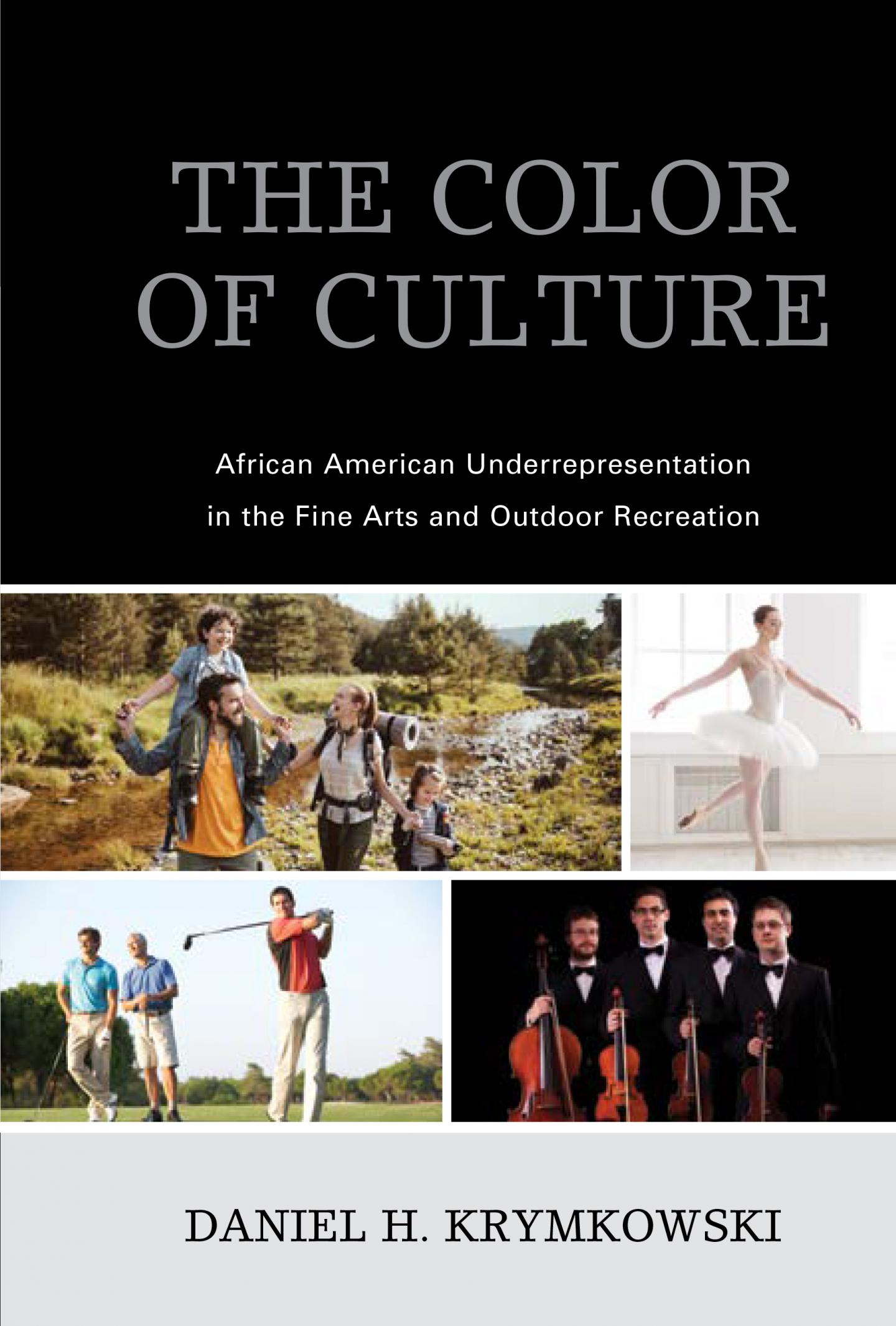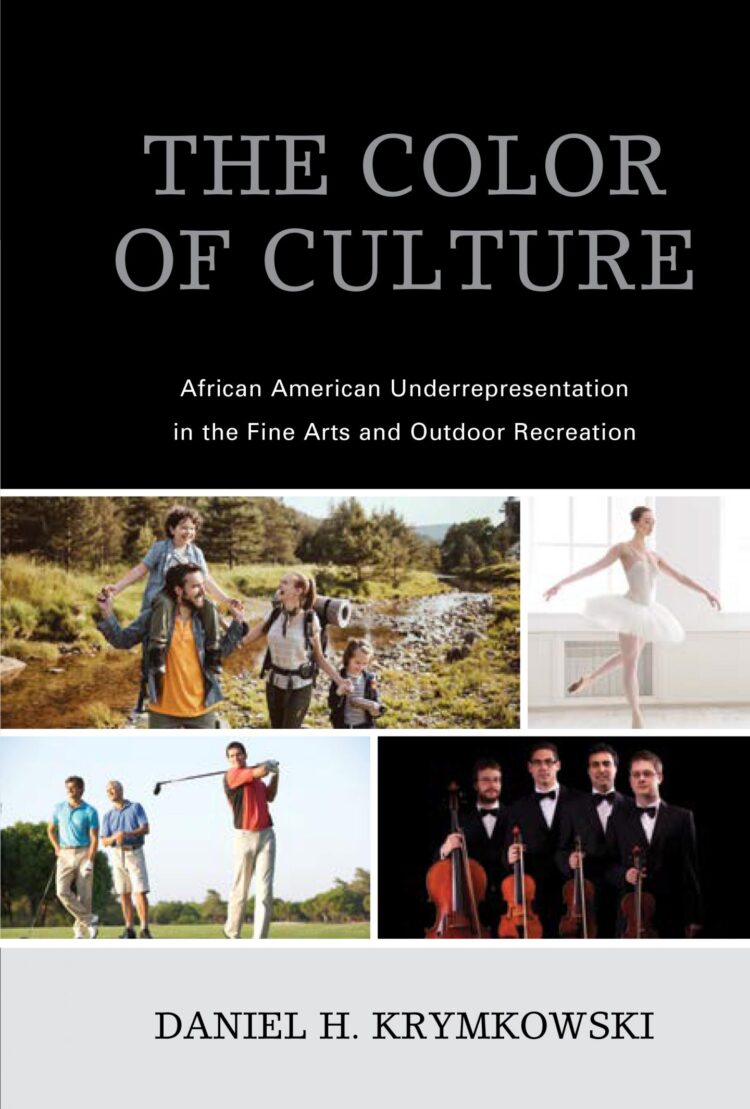Racial discrimination at heart of African Americans’ lower participation rates in range of recreation, cultural activities, says new book

Credit: Courtesy Lexington Books
That African Americans are underrepresented in outdoor activities like golf and skiing and in arts endeavors like classical music and ballet would come as no surprise to most Americans.
A new book is the first to show with statistical rigor how deep and extensive the underrepresentation is and to demonstrate its root cause: systemic racism.
“Socioeconomic factors like low income, geographical barriers such as living far from natural areas or cultural centers, or preferences are often cited as the reasons African Americans don’t engage in these activities at the rates whites do,” said Daniel Krymkowski, a professor of Sociology at the University of Vermont and author of the new book, The Color of Culture (Lexington Books, January 2021).
“While these variables play a role, when you use statistical techniques to strip out their effects, African Americans still participate at much lower rates. The only factor that explains the remaining discrepancy is racial bias,” he said.
The book examines African American participation in nine activities: golf, hiking, hunting and fishing, water activities, cold-weather recreation, classical music, painting and sculpture, ballet and theater. To reach its conclusions, it uses two often cited but under-analyzed surveys from the National Forest Service and the National Endowment for the Arts.
African Americans participate at rates from two to five times less than whites in these areas, the book’s statistical analysis shows. Examples include golf, at 17% for whites, 6% for Blacks; hiking, at 38% vs. 13%; downhill skiing at 7% vs. 2%; attending classical music concerts at 11% vs. 4%; and visiting art museums at 24% vs. 12%.
“Social scientists often talk about economic inequality,” Krymkowski said. “This is cultural inequality. Whites can be cultural omnivores in ways African Americans can’t. That’s important because these activities contribute to health and well-being and, especially in the arts, a sense of being fully human.”
Krymkowski doesn’t suggest that Black Americans should participate in these activities or that they are better than African American culture and recreation, only that they should have the same opportunity as whites to participate in them, especially given that whites participate extensively in “Black” culture.
“Past or current discrimination shouldn’t constrain them,” he said.
Throughout the book, Krymkowski supplements data analysis with excerpts from books and media accounts that substantiate the statistical findings and show their real world impacts. In the section on golf, for instance, he includes passages from the 2007 book Deals on the Green, which outlines the game’s central role in helping advance business careers, a perk Black Americans by and large don’t benefit from.
Krymkowski is skeptical that preferences explain African Americans’ lower participation rates. In his analysis of classical music, he found that even those African Americans who reported that they liked classical music went to concerts at lower rates than whites who said they enjoyed the music. Further, preferences are highly affected by opportunity.
“In that case, it’s not African Americans’ dislike of classical music that kept them from attending concerts,” he said. “It’s more likely that concert venues are what sociologists call ‘white sanctuaries,’ areas that have historically excluded Blacks and still feel unwelcoming.”
While Krymkowski had preference data only for classical music, he believes a similar dynamic plays out over the other areas he examined.
“Other research as well as journalistic accounts suggest that art galleries, community orchestras, the club house at the golf course, ski resorts, even hiking trails are white sanctuaries to varying degrees,” he said.
To address unequal access, socioeconomics has a large role to play, Krymkowski says. “It doesn’t explain everything, but closing income gaps is crucial, especially given that they, too, result from historic and contemporary discrimination” he said.
“But so much more needs to be done in opening up these spaces. We need to normalize these activities, and to start early.”
The book concludes with a declaration of the right of all people to experience all forms of culture. “Each one of the pursuits examined in this book is its own unique aesthetic experience,” he writes. “As human beings, such experiences are an integral part of our existence, and all people should be entirely free to choose the cultural forms with which they would like to engage. Being a full citizen in the Marshallian sense requires nothing less.”
Krymkowski’s findings are based on a National Endowment for the Arts supplement to the Bureau of Labor Statistics’ and Census Bureau’s Current Population Survey that includes questions on arts interests and activities, and a survey conducted by the National Forest Service that queries respondents about their outdoor recreation activities.
Both the NEA and the Forest Service use the results largely to publicize participation rates in the activities they promote. Krymkowski is among the first to correlate participation statistics with demographic and socioeconomic data the surveys capture and to use advanced statistical techniques to determine why individuals did or didn’t participate in the activities.
###
Media Contact
Jeff Wakefield
[email protected]





